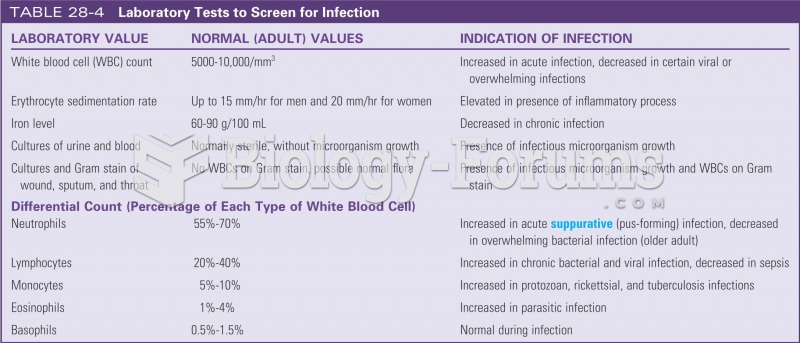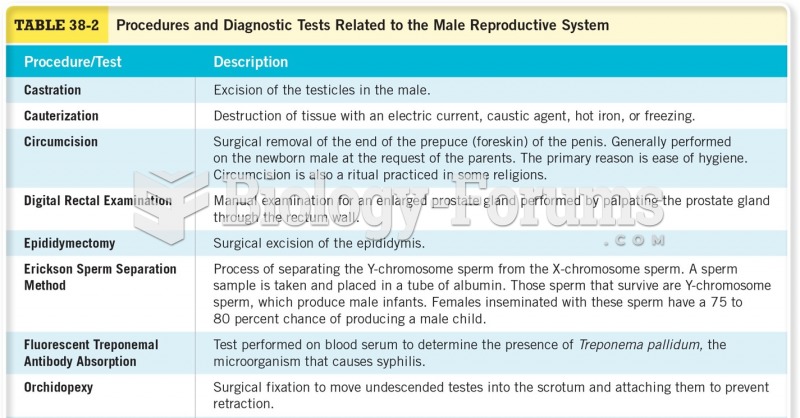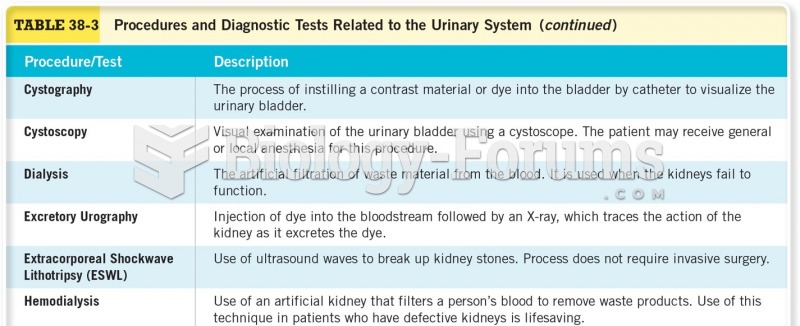|
|
|
By definition, when a medication is administered intravenously, its bioavailability is 100%.
The National Institutes of Health have supported research into acupuncture. This has shown that acupuncture significantly reduced pain associated with osteoarthritis of the knee, when used as a complement to conventional therapies.
Between 1999 and 2012, American adults with high total cholesterol decreased from 18.3% to 12.9%
More than 30% of American adults, and about 12% of children utilize health care approaches that were developed outside of conventional medicine.
Dogs have been used in studies to detect various cancers in human subjects. They have been trained to sniff breath samples from humans that were collected by having them breathe into special tubes. These people included 55 lung cancer patients, 31 breast cancer patients, and 83 cancer-free patients. The dogs detected 54 of the 55 lung cancer patients as having cancer, detected 28 of the 31 breast cancer patients, and gave only three false-positive results (detecting cancer in people who didn't have it).







